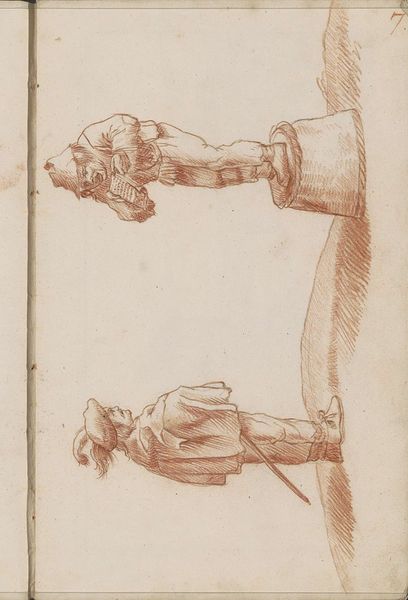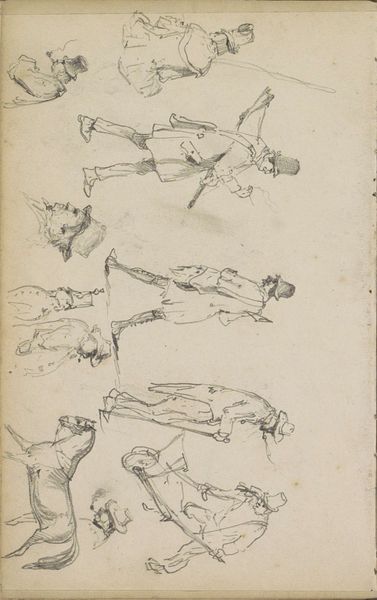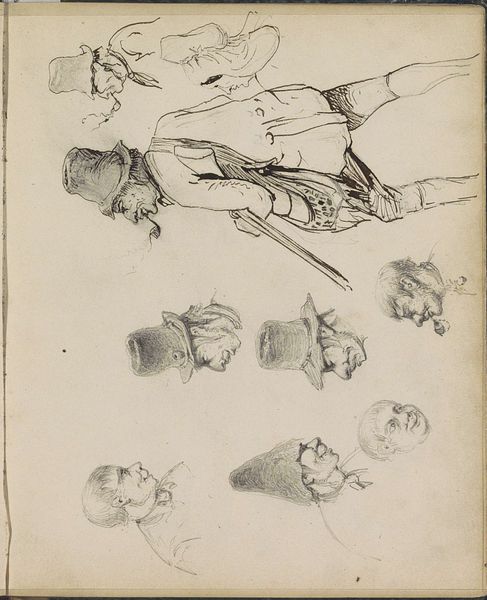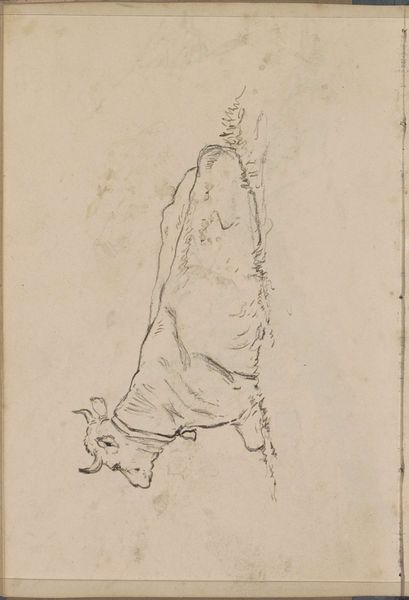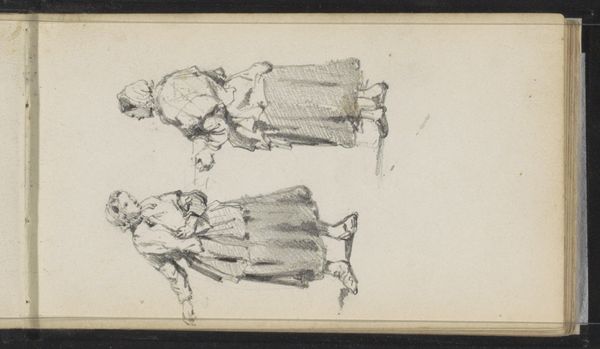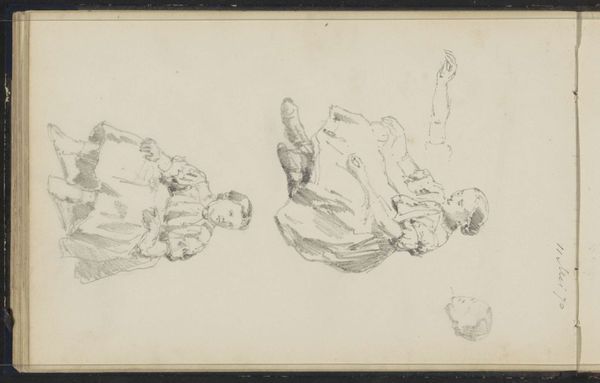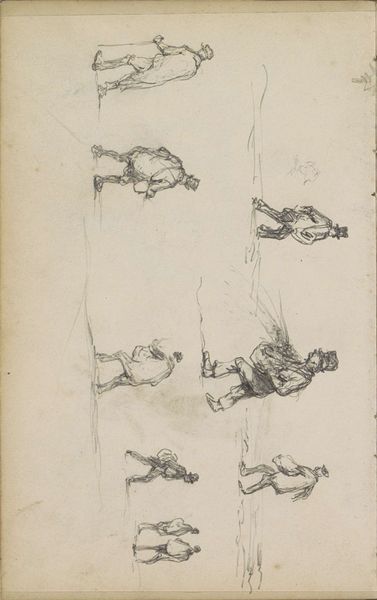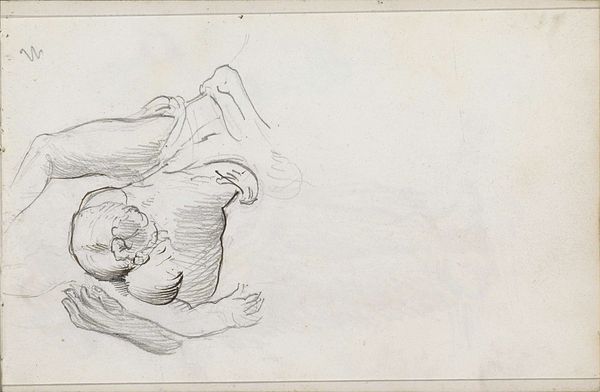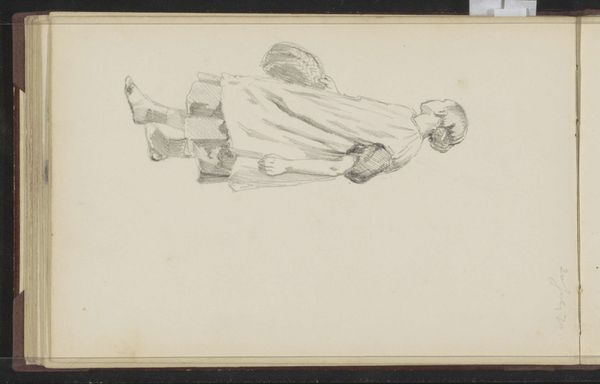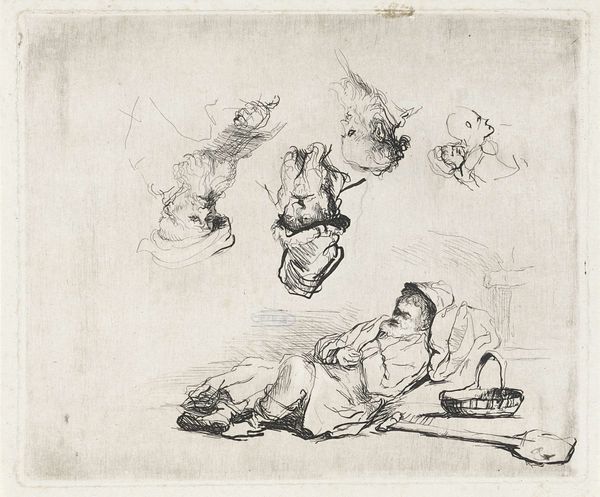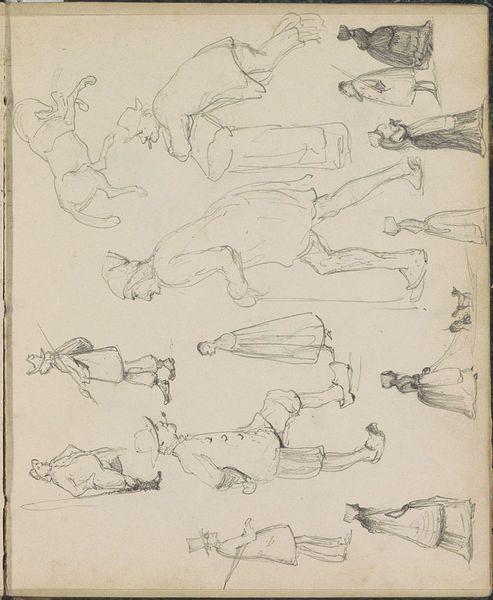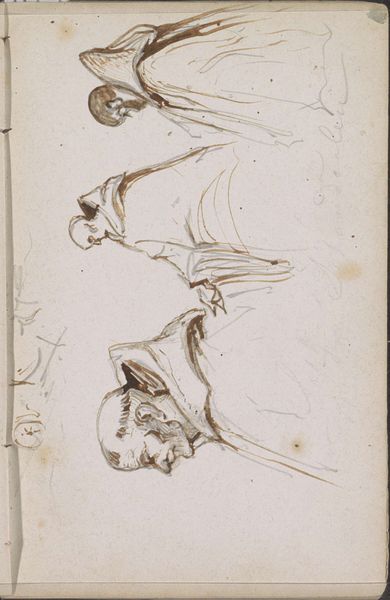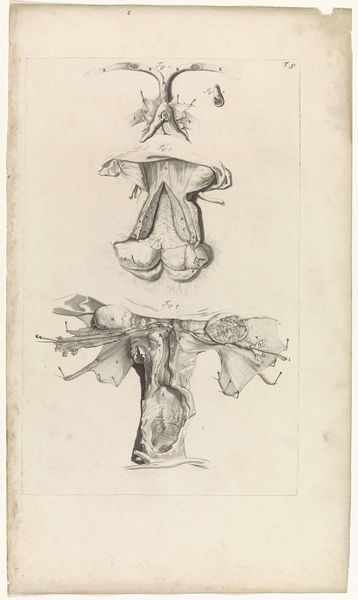
drawing, paper, pencil
#
portrait
#
drawing
#
pencil sketch
#
figuration
#
paper
#
pencil
#
academic-art
#
realism
Copyright: Rijks Museum: Open Domain
Curator: This is "Model Donder, man met karikaturale kop" by Johannes Tavenraat, created in 1842. It's a drawing rendered in pencil on paper. Editor: The most immediate impression is of a swift, almost impatient rendering. The lines are active, giving a sense of movement to an otherwise still figure. Curator: Indeed, the quick strokes point to the realities of academic art training at the time. Consider how often artists had to capture fleeting expressions or poses in their studies. But more than that, caricature holds a significant, often subversive, position in social commentary. Do you see it reflected here? Editor: Subversive perhaps not overtly, but certainly probing. Note the emphasis on the head. See how the artist captured, perhaps exaggerated, its specific shapes and how that distortion reflects social standing and identity back then. Curator: I agree. I see an attempt to not just capture likeness, but perhaps some essence of the sitter’s lived experience—his socio-economic realities maybe hinted in that furrowed brow. It certainly complicates how we see portraiture during that period. Editor: Note the contrasting techniques: quick hatching versus areas of blended graphite creating subtle tonal shifts across the form, adding both definition and a strange ambiguity. This blend of precision and looseness creates an unsettling dynamic. Curator: This juxtaposition between academic study and social critique makes this artwork especially interesting for our current audience. It shows how art can serve as a subtle mirror to society, even when seemingly focused on pure formal skill. Editor: A fitting encapsulation. Tavenraat, through line and form, has prompted an ongoing conversation between art and identity. Curator: Precisely, one that still resonates almost two centuries later.
Comments
No comments
Be the first to comment and join the conversation on the ultimate creative platform.
